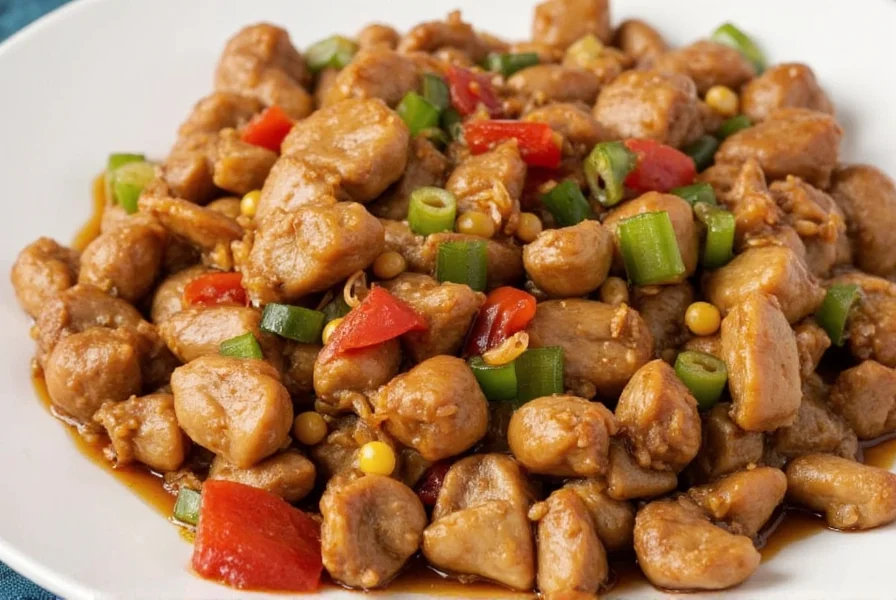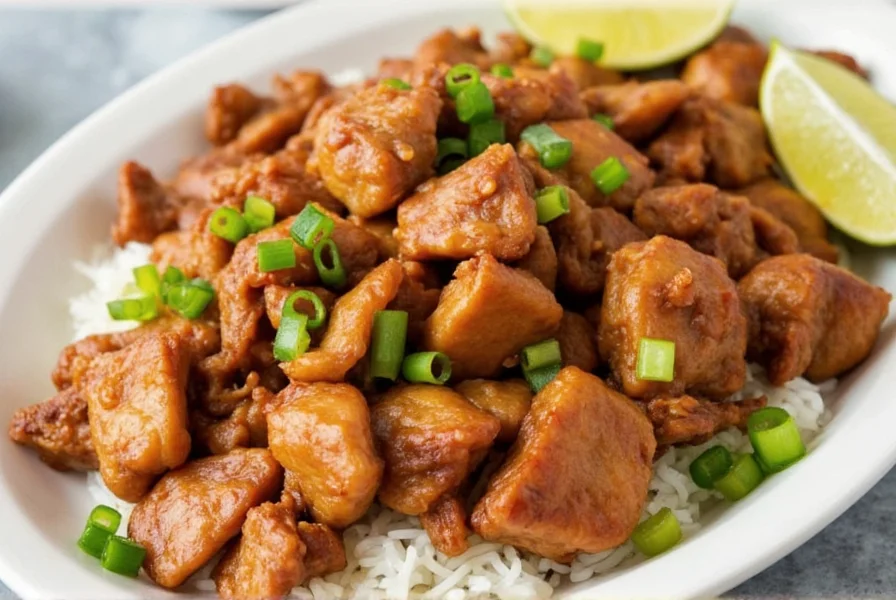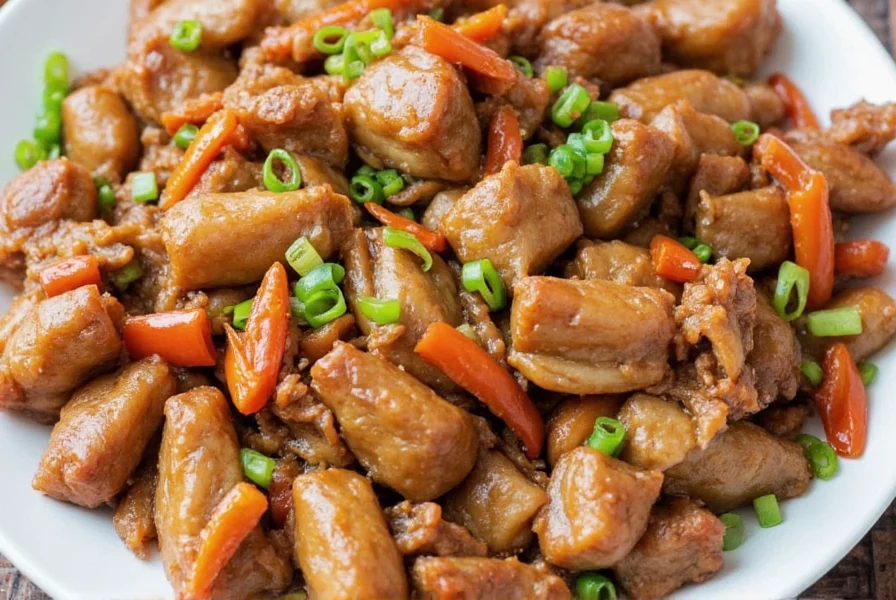If you're searching for how to make ginger pork stir fry that rivals your favorite Chinese restaurant, you've found the right guide. This classic dish showcases the perfect balance of fresh ginger's zesty warmth with succulent pork, creating a meal that's both simple to prepare and deeply satisfying. Whether you're a beginner cook or looking to refine your technique, this comprehensive guide covers everything you need to know about preparing authentic ginger pork.
The Origins of Ginger Pork
Ginger pork has roots in Chinese culinary tradition, where fresh ginger has been used for thousands of years both as a flavor enhancer and for its digestive properties. The dish became popular worldwide through Cantonese cuisine, where chefs mastered the technique of velveting pork to achieve that signature tender texture. In traditional Chinese cooking, ginger pork often appears during winter months as ginger is believed to have warming properties.
Essential Ingredients for Perfect Ginger Pork
The magic of ginger pork lies in its simplicity and quality of ingredients. For the best ginger pork recipe, you'll need:
- Pork: Pork shoulder (also called pork butt) is ideal because its marbling keeps the meat moist during quick cooking
- Fresh ginger: Young ginger with smooth skin provides the brightest flavor (about 3 tablespoons grated)
- Aromatics: Fresh garlic and green onions form the flavor foundation
- Sauce components: Light soy sauce, Shaoxing wine (or dry sherry), rice vinegar, and a touch of honey
- Velveting ingredients: Cornstarch and egg white for tenderizing the pork
| Ingredient | Amount | Substitution Options |
|---|---|---|
| Pork shoulder | 1.5 lbs | Chicken thigh or firm tofu for vegetarian version |
| Fresh ginger | 3 tbsp grated | Ginger paste (use 1/3 less) or galangal |
| Shaoxing wine | 2 tbsp | Dry sherry or omit with extra rice vinegar |
| Light soy sauce | 3 tbsp | Coconut aminos for gluten-free option |
Step-by-Step Ginger Pork Preparation
Follow these steps for restaurant-quality ginger pork every time:
1. Prepare the Pork
Slice the pork against the grain into 1/4-inch thick pieces. Combine with 1 tablespoon cornstarch, 1 egg white, 1 teaspoon Shaoxing wine, and 1/2 teaspoon sesame oil. Mix gently and let marinate for 15-20 minutes while you prepare other ingredients. This velveting technique ensures tender results.
2. Make the Sauce
In a small bowl, whisk together 3 tablespoons soy sauce, 2 tablespoons Shaoxing wine, 1 tablespoon rice vinegar, 1 tablespoon honey, 1 teaspoon cornstarch, and 1/4 cup chicken broth. Set aside.
3. Stir-Fry Process
Heat 2 tablespoons vegetable oil in a wok or large skillet over high heat until shimmering. Add the marinated pork in a single layer and cook without stirring for 1 minute until lightly browned. Stir-fry for another 1-2 minutes until 70% cooked, then remove from wok.
Add 1 tablespoon oil to the wok, then add 3 tablespoons freshly grated ginger and 3 minced garlic cloves. Stir-fry for 30 seconds until fragrant but not browned. Return the pork to the wok along with any accumulated juices.
Pour in the sauce mixture and stir constantly until the sauce thickens and coats the pork, about 1-2 minutes. Finish with sliced green onions and a drizzle of sesame oil.

Pro Tips for Authentic Ginger Pork
Mastering ginger pork requires attention to a few key details:
- Fresh ginger matters: Young ginger has a brighter, less fibrous texture than mature ginger. Look for smooth, taut skin without wrinkles.
- Don't skip velveting: The cornstarch and egg white marinade creates a protective layer that prevents the pork from becoming tough during high-heat cooking.
- High heat is essential: Stir-frying requires intense heat to create that characteristic wok hei (breath of the wok) flavor without overcooking the ingredients.
- Prep everything in advance: Ginger pork cooks quickly, so have all ingredients measured and within reach before you start heating your wok.
Common Mistakes to Avoid
Even experienced cooks can make these ginger pork preparation errors:
- Using old or dried ginger: Ginger loses potency quickly. Discard any ginger that feels soft or has wrinkled skin.
- Overcrowding the wok: Adding too much pork at once lowers the temperature and causes steaming instead of searing.
- Cooking ginger too long: Ginger should be fragrant but not browned, which creates bitterness.
- Adding sauce too early: The sauce should go in after the aromatics to prevent burning the sugar components.
Variations of Ginger Pork
Once you've mastered the basic ginger pork recipe, try these delicious adaptations:
- Vegetable-packed version: Add bell peppers, broccoli, and snap peas during the last minute of cooking for a complete meal
- Spicy ginger pork: Include 1-2 sliced red chilies or 1/2 teaspoon chili flakes with the ginger and garlic
- Healthy ginger pork meal prep: Use reduced-sodium soy sauce and serve over cauliflower rice for a lower-carb option
- Sweet and sour ginger pork: Add 2 tablespoons pineapple juice and 1 diced bell pepper to the sauce mixture

Serving Suggestions and Pairings
Ginger pork shines when served with:
- Steamed jasmine rice or brown rice for a classic pairing
- Cucumber salad with rice vinegar to balance the rich flavors
- Steamed bok choy or Chinese broccoli as a side vegetable
- A light jasmine tea to cleanse the palate between bites
For entertaining, consider serving ginger pork as part of a larger Chinese feast with egg rolls, hot and sour soup, and sesame noodles. The dish also works beautifully in lettuce wraps for a lighter option.
Storage and Reheating Instructions
Properly stored, ginger pork maintains quality for 3-4 days in the refrigerator:
- Cool completely before transferring to an airtight container
- Store sauce and pork separately if possible to prevent sogginess
- Reheat gently in a skillet over medium-low heat with a splash of water
- Avoid microwaving which can make the pork tough
- Do not freeze as the texture of the pork deteriorates
Frequently Asked Questions
What cut of pork works best for ginger pork stir fry?
Pork shoulder (also called pork butt) is ideal for ginger pork because its marbling keeps the meat tender during quick cooking. The fat content prevents the pork from drying out in the high-heat stir-fry process. For leaner options, pork tenderloin works well but requires careful timing to avoid toughness.
Can I make ginger pork without alcohol?
Yes, you can substitute Shaoxing wine with additional rice vinegar mixed with a small amount of sugar, or use mushroom broth for depth of flavor. The alcohol helps tenderize the meat and enhances flavor extraction from the ginger, but the dish remains delicious without it. For the best ginger pork without alcohol, increase the ginger quantity slightly to compensate for flavor depth.
How do I prevent my ginger pork from becoming tough?
To prevent tough ginger pork, slice against the grain, use the velveting technique with cornstarch and egg white, and don't overcook the meat. Remove pork from the wok when it's 70% cooked (still slightly pink), as it will continue cooking when you add the sauce. High heat with quick cooking preserves tenderness better than low-and-slow methods for this dish.
What's the difference between ginger pork and ginger beef?
The main difference lies in the protein and cooking time. Pork requires less cooking time than beef to remain tender, so ginger pork typically uses thinner slices and shorter stir-frying duration. Pork also has a milder flavor that allows the ginger to shine more prominently. The sauce ratios remain similar, but pork benefits from slightly more ginger to complement its delicate taste.











 浙公网安备
33010002000092号
浙公网安备
33010002000092号 浙B2-20120091-4
浙B2-20120091-4